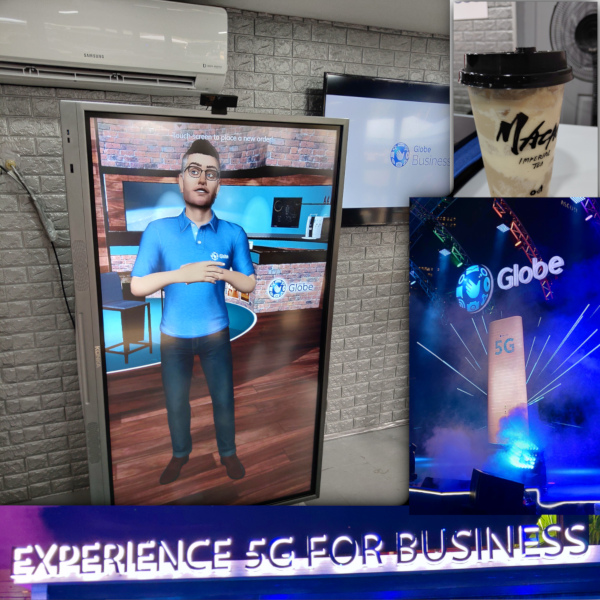The baseline is that I believe it is important to involve everyone and proactively manage the narrative. Have a town hall and follow-up through other communication channels to let everyone in the organisation know that change is happening. That change outside the organisation is inevitable and that if we don’t adapt to those changes then nobody here will have a job. Make sure to monitor the business at all levels, listen for rumours and gossip and squash them before they can take hold by communicating the truth supported by facts.
Purpose, Vision and Mission
Alignment is crucial for innovation. Critically assess and potentially rewrite the business purpose, vision, mission, company code and employee code to make sure everyone is aligned. Understand what the business is trying to achieve and why, and communicate what is in it for each employee.
Automation
Transformation often comes with extensive automation and improvement of workflows. There is typically a lot of fear of being made redundant because of technology so you should consider a policy that guarantees that nobody will lose their job because of automation - everyone will be given the time and support to adapt to changing roles. This is a bold promise to make but it will help reassure employees and reduce resistance to change.
Key Performance Indicators
KPI’s need to be changed to support and encourage an innovation culture. The specific ones will depend on your business but there should be a good mix of business, team and individual KPIs. Ideation KPIs could be for the number of ideas collected internally, externally and from users. You could have KPIs that encourage experimentation and accept failure such as the number of prototypes created from ideas and lessons learned from failures. Success KPIs could include ideas commercialized, approved patents, number of value-added partnerships. KPIs around learning could be relevant new skills learned, existing processes improved and time spent on mentorship. KPI reviews will be given on a project level within teams as well as by mentors. This is not a one-time yearly event but done constantly using live KPI software. This will help track growth, evolving specialisations, gaps and career opportunities within the organisation. All reviews are 2-way, mentors and project leads review their team members and team members review their mentors and project leads.
JD’s and Contracts
Job descriptions and employment contracts will need to be updated so they are aligned with the innovation goals and KPIs. The Some companies opt to have staff interview for their job again but this is only fair to the staff if you have provided training, mentoring, incentives and time for them to adjust to this new reality. JD’s and employment contracts are an early experience of new staff with the company and it needs to send the right message. New JD’s need to avoid gender biasses, invite diversity and set the right tone for your innovation culture. Many employment contracts have outdated clauses that no longer make sense, are not flexible enough and don’t encourage creativity and innovation. Aurecon is doing some interesting things in this area: https://www.aurecongroup.com/about/latest-news/2018/may/visual-employment-contract
Flatten Hierarchies
Hierarchies can be a cause of bureaucracy, politics and silos, and can hamper creativity and innovation. Organisations need to evolve to a structure of dynamic and diverse “2-pizza” teams (5-10 people) working on specific projects. I cover this for engineering teams a bit more here: https://www.binarythinktank.com/blog/dynamic-engineering-teams.html. Instead of managers, you need mentors and leaders that point teams in the right direction and give them the tools to succeed rather than micromanaging and doing as much as possible themselves. Check out how AWS works with 2-pizza teams: http://blog.idonethis.com/two-pizza-team/ and their concept of “away teams”: https://www.theregister.co.uk/2019/05/14/amazons_away_teams/. For a more extreme case of “no hierarchy” check out Valve: https://www.bbc.com/news/technology-24205497.
Fail Fast
While the goal of projects is, of course, to be successful, failure needs to be acceptable. Failure should have some lessons that are learned and can enable the team to make changes for the better but it can also mean that a project can be killed off when it becomes apparent that it's not going to be a success. Failing fast means that failure can happen before too much time and resources have been sunk into it. Teams can achieve this with techniques such as design thinking, being user-driven and prototyping. Understand what the user wants without making assumptions, prototype in minimal time something that the user can try, collect feedback to prove you are on the right track and, if you are not, drop the project or make changes and evolve the project. This not only applies to innovation projects, the core capabilities of the business need to continue to meet and exceed client expectations and should not be neglected for the sake of innovation.
Competency Networks
Cross-department networks between similar specialisations need to be created within the organisation to foster peer discussions and enable opportunities to find mentors. Time will be provided to those willing to mentor. An internal database - which is accessible to all employees, will track everyone’s specialisations, interests and project history. This will be used when teams are needed for new projects to enable employees to self-organise and find the right talents for their projects.
Time to Innovate
Employees that show the right mindset for innovation can be rewarded with time. For example, they can be given 20% of their time to find and prototype new innovative ideas. They should also be free to create small teams to work on these projects (after some checks and approvals as part of an innovation funnel) and those team members will also be given 20% of their time to engage with these projects. Google gives this to all employees but this is a cultural thing that was there from the start. For transformation, giving this freedom to those that can lead the way may be a better approach. More about how Google does this here: https://www.inc.com/adam-robinson/google-employees-dedicate-20-percent-of-their-time-to-side-projects-heres-how-it-works.html.
Human Resources
HR must get the resources and training it needs to hire for culture, build a corporate brand that appeals to innovators and be equipped with suitable software solutions. Hiring for culture should come from within the organisation so any heavy reliance on external agencies should be phased out. Interviews should focus on a combination of experience, IQ/EQ/LQ and culture fit, skills are secondary as most of them will be redundant in 18 months with the current pace of change. A deep onboarding process with culture indoctrination and effective team-bonding exercises to reinforce the culture will be part of the changes.
Physical Workspace
Changes in the office workspace may be needed to make the space more conducive to innovation. Create a workspace that causes forced collisions, drives teamwork and is optimised for small agile teams working on projects. Flexible desks tend to end up being “claimed desks” again fairly soon. You can reduce this by having different zones for different types of work. Have spaces for open collaboration and spaces for working quietly. Have dedicated spaces for specific activities such as design-thinking exercises and prototyping, and a space to relax and re-energise. Here are some examples of creative workspaces: https://www.artsy.net/article/artsy-editorial-7-innovative-office-spaces-designed-spark-creativity
Training
Training can be made available in various forms to meet different budgets and goals. Networking events can be created for different types of capabilities and have regular internal and external speakers talk about topics relevant to the business but also topics from entirely different industries to create broader experiences and perhaps trigger associative thinking. In-house and online training sessions should be provided for innovation capabilities such as question storming, networking, design thinking, agile, association, and others. Pick or create training that is engaging, with well-written content, rich media and interactivity. Make sure the training platform can be used on mobile devices.
Workshops and Feedback
Innovation workshops are great for idea generation. Working with a team of stakeholders and subject matter experts to collect user input, discuss challenges, brainstorm ideas and scope solutions. Note that questions are more important than answers but also harder to come up with - check out “question storming” techniques to help with this. 1:1 meetings with stakeholders are just as important, especially in Asia where “saving face” can lead to stakeholders not challenging ideas or the facilitator in a team setting. Wrap up workshops with a 1:1 session with each stakeholder to get their personal insights and opinions, and confirm that a selected solution is going to get the support it needs.
Idea Generation
For innovation you need ideas and a pipeline or funnel to assess these ideas and create a validated value-added innovation project portfolio - avoid innovating for the sake of innovating! One way to source ideas from staff is to ask the 3x3 list:
- What are three things you would like to stop doing
- What are three things you would like to start doing
- What are three things that you want to continue doing
Collect all the responses, merge ideas that are the same or similar and put them up on a wall. Then give staff 5-10 small stickers each and ask them to place their votes on the ideas - this can also be done digitally to involve multiple offices in the event. Depending on the size of the company and the number of ideas you then pick the top 5/10/20/etc. projects to work on. Assign an innovation champion at the leadership level to each project - executing this project will be part of their evaluation and KPIs. Let these leaders build their project teams or ask for volunteers. Timebox the projects and make sure the teams are prototyping so they are able to fail fast on approaches that are not working out.
Summary
There are many different activities that be done within innovation transformation and there is no one-size-fits-all. Above are some ideas, but companies need to be assessed and the changes should be specific to the challenges, opportunities, existing culture and budget of the individual companies and their markets. I do not believe in approaches that are not transparent, inclusive and honest. I strongly believe that it is crucial to focus on people and their needs and fears. Discuss and address any fears they have, squash rumours before they become a problem, focus and hire for culture, and provide training and support before expecting people to change to the new needs of the business. Lastly, it’s important to remember that the core business should not be neglected. Initially, the core business will need to support and finance the bigger innovation projects so the core team’s buy-in and continued support are crucial. Two final recommendations:
https://www.amazon.com/Innovators-DNA-Mastering-Skills-Disruptive-ebook/dp/B0054KBLRC
and
https://www.amazon.com/Innovators-Dilemma-Technologies-Management-Innovation-ebook/dp/B012BLTM6I/


